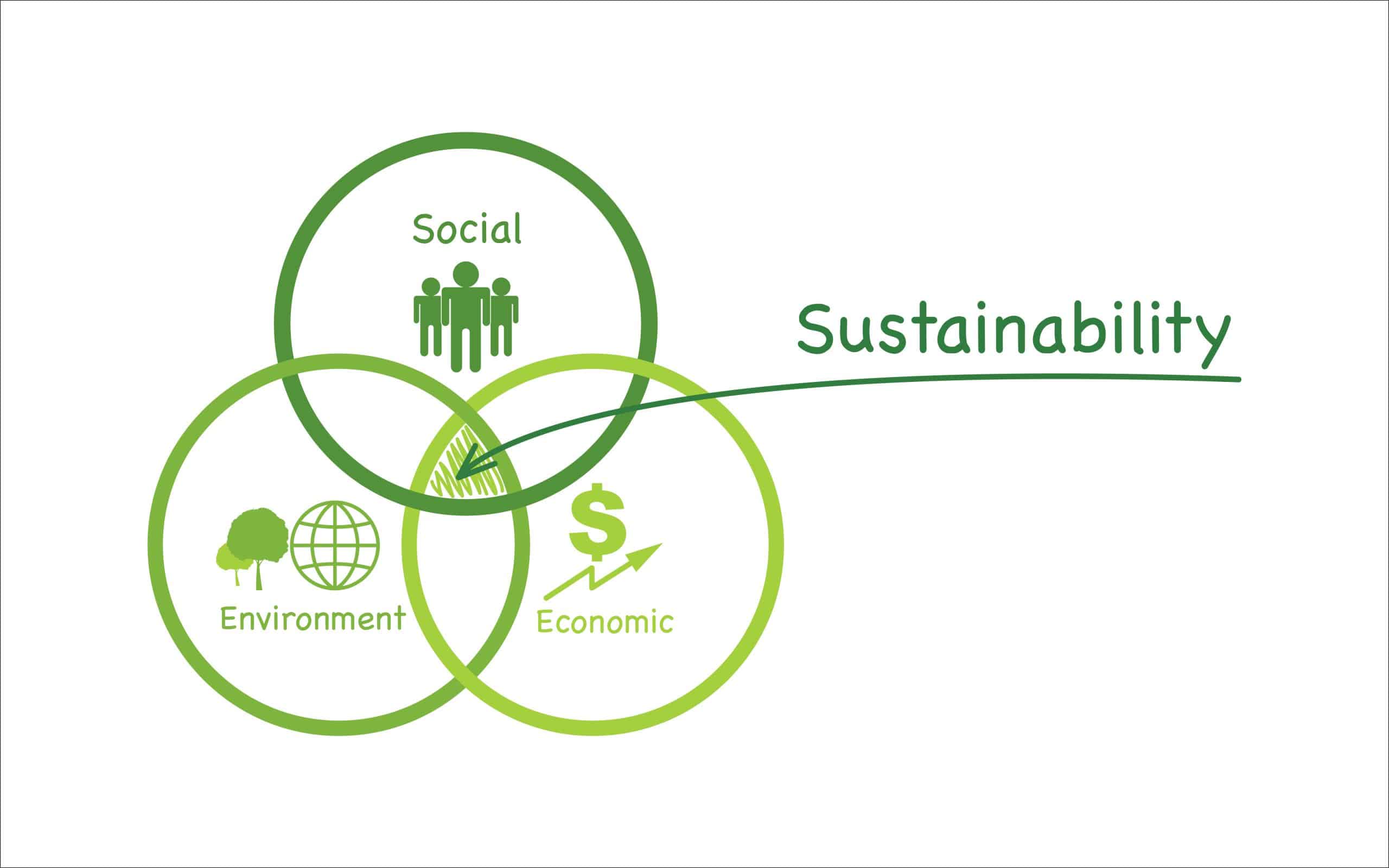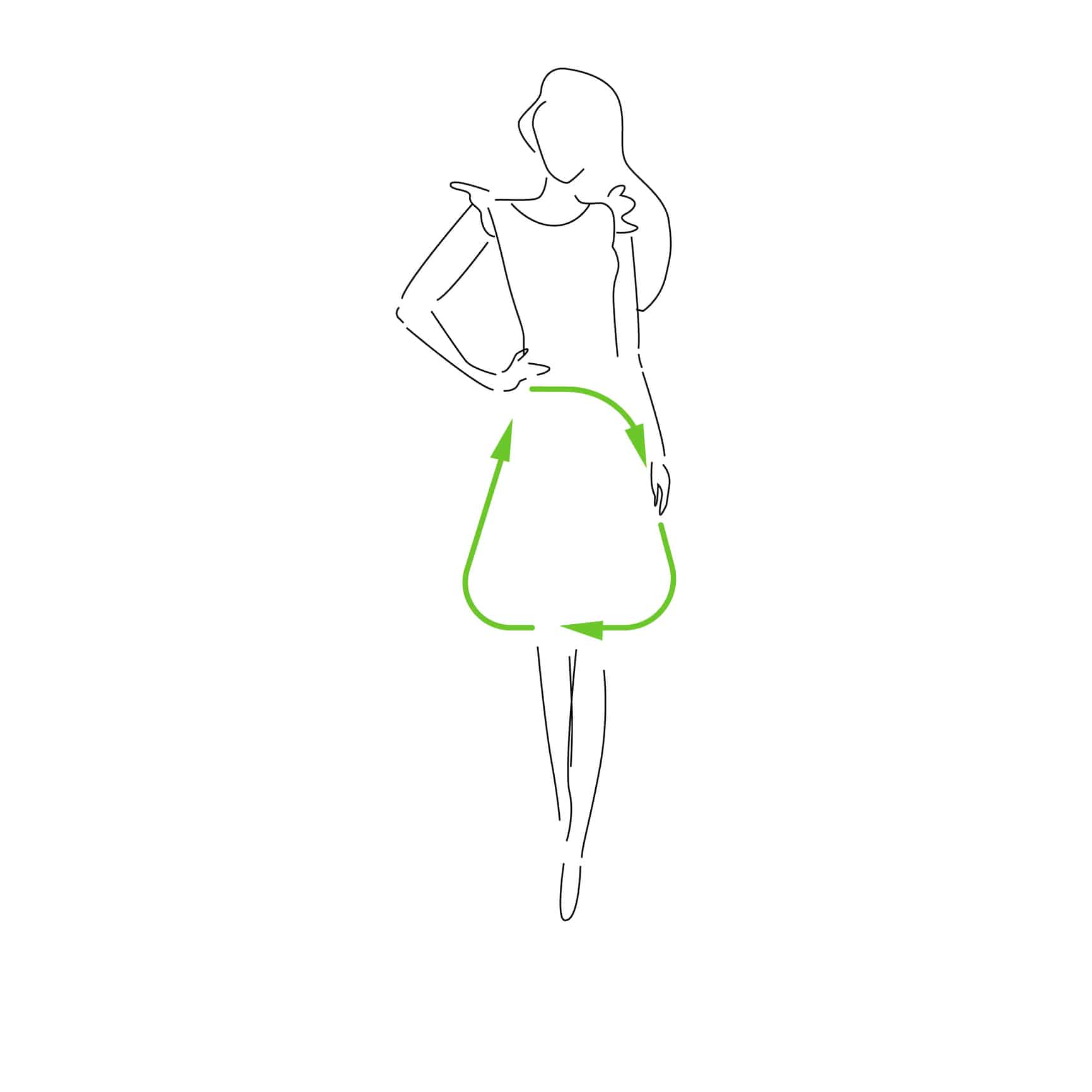The word “sustainability” is thrown around very randomly these days. For us ordinary people, it is a word that only reflects a green future; to be precise, a future that is focused more on a world where we can live in a healthy environment. That is the only concept we are aware of when it comes to sustainability. The point is that we have incredibly reduced the meaning, understanding, and vision of sustainability. Individual efforts matter greatly; however, the industry needs to do significantly more rather than depend on individuals to change how they use products; plus, we need to be cognisant of the breadth of the term and what it includes. There is a whole movement behind bringing the concept of sustainability to what it is now.
A few of the ideologies that hide behind sustainability are economic stability, social justice, internationalism, and environmental protection. Different movements led to achieving these targets, and by the end of the twentieth century, they were combined under one term; “sustainable development.” It was basically in 1983 when the concept of sustainability started to gather together. United Nations asked the then prime minister of Norway, Gro Harlem Brundtland, to head the “World Commission of Environment and Development.” Around four years later, Brundtland Commission, in their final report, defined sustainability as:
“Development that meets the needs of the present without compromising the ability of future generations to meet their own needs.”
We have widely accepted and adopted sustainability. We are at this stage due to numerous collective efforts. Along with time and workforce, we have also spent lots of money to achieve or be on the path of sustainability targets. In short, sustainability is not cheap to achieve, it might be in the future when we become more efficient and accustomed to a sustainable lifestyle, but today it is not. Similarly, the cost to impart sustainability in textiles is high, resulting in (potentially) lesser profits than before due to stagnated business models. First, let’s understand the typical reason behind sustainable development being expensive.

Certain factors contribute to sustainability being considered expensive. The most common ones are described below:
In businesses, consumer demand has a huge role in setting a selling price. It is seen that despite sustainability becoming a common phenomenon worldwide, the orders of sustainable products have not equally reduced the cost of the end product. If the cost of production stays at the same level, but the price of the end product is decreased somehow without the increase in consumer demand, it results in losses for the big companies or businesses. The textile industry runs on the same rule as it produces the products in bulk with lower prices, but if they lower the production, then prices must go up to keep the profitability in balance.
A conventional raw material costs much less than an organic or sustainable raw material. One would think, why is that? There are two main reasons; one is the limited demand in the market for sustainable products. Therefore sustainable raw materials are produced in small quantities, due to which their costs rise, for example, recycled paper, recycled cotton, or organic cotton. There is still a lot of work that needs to be done on private and government levels to increase the availability and supply of sustainable raw materials and spread awareness for sustainable product consumption.
The second major hurdle is the cost of production which is higher than the conventional raw materials. For example, in the case of organic cotton, the farmer has to wait for three years for his land to be declared suitable for organic cotton cultivation. Similarly, he has to follow a set of farming standards which requires a certain level of financial flexibility, less production and intensive care during plantation. In recycled products, recycling is an additional process that requires other resources such as money, machinery, and manpower.
If a company or business claims to be sustainable, they need to provide proof. The consumer will not believe their claims until there is solid proof that sustainability is indeed being applied the way the business claims. This is where different sustainability certifications come in. The process of accreditation involves several rounds of inspections and testing. Certifications add up to the total amount of the end product as money, time, and other resources are spent on it. The certificates also have fees, and they are usually expensive. For example, in textiles, there are certifications like Oekotex, Better Cotton Initiative, GOTS, CmiA, Fairtrade etc. They all cost thousands of dollars, along with annual or biannual audits.
A few of the main reasons why profitability is difficult with sustainability in textiles are mentioned below. It can also be said that sustainable textiles have higher costs than the usual ones.
Fast fashion is why the textile industry is at an all-time high and keeps making more money. Sustainability is hard to incorporate in textiles due to low profits or increased costs. Fast fashion makes the market competitive by bringing new trends every other season. A considerable amount of labour is put to work at low wages to fulfil demand on time. Unsustainable or cheaper raw materials can be easily acquired.
To conclude, fast fashion is as unsustainable as it can get, whether economically, socially, or environmentally. To make it sustainable, it shall start by using raw materials that are safe for the environment and the people, along with providing labourers with the fair wages they deserve. This increases the cost of fast fashion brands; hence, the companies generate fewer profits than they were generating.
Infrastructure has a significant role to play if an industrial unit plans to go sustainable. Most units have been operating on old infrastructure, and hence acquiring a new infrastructure for sustainability costs a lot of money and manpower. For example, the biggest problem with textile industries is their wastewater which is usually let into natural water streams, which ruins the quality of water and marine life. Developing countries have huge sectors of textile industries. Many of the industries there do not have significant levels of capital to invest or have good financial management. Due to this, when infrastructure investments like installing wastewater treatment plants are made, there is a significant risk of mismanagement, which reduces their revenue. Infrastructure changes required for wastewater treatment plants or other sustainable machinery are costly.
The textile industry in the developing world is operating on low-cost labour (which is also an issue, as everyone deserves a living wage). This type of labour cannot always be used in the new ways of making, handling, or managing sustainable textiles without significantly retraining the labour force. That is, skilled labour is required for efficient and effective task completion. So, a company adopting sustainable practices may need to hire appropriately skilled labour at a higher cost, affecting their profits or the end-product prices.

From the information mentioned above about sustainable textiles, we can conclude that no matter what, sustainability comes with a number of challenges on the financial front for the textile industry. There are far too many problems at this stage to make it cost-effective and make the same profits as the industry makes with conventional products. And to maintain the profits, the costs of end products will be increased, which can bring a decline in consumer demand.
Sustainability will eventually prevail, but for now, the textile industry has to bear the costs and lesser profits for the future ahead. Innovation is the key to this major hurdle. Companies are looking for new technologies and enhanced processes, which will eventually increase their efficiencies, and they are more likely to work on and adopt sustainability. With the growing demand for sustainable products, with time, most fashion brands will have to go for sustainable business solutions.
At Revstance, we work with such sustainable fashion brands to help them on this journey.
| Cookie | Duration | Description |
|---|---|---|
| cookielawinfo-checbox-analytics | 11 months | This cookie is set by GDPR Cookie Consent plugin. The cookie is used to store the user consent for the cookies in the category "Analytics". |
| cookielawinfo-checbox-functional | 11 months | The cookie is set by GDPR cookie consent to record the user consent for the cookies in the category "Functional". |
| cookielawinfo-checbox-others | 11 months | This cookie is set by GDPR Cookie Consent plugin. The cookie is used to store the user consent for the cookies in the category "Other. |
| cookielawinfo-checkbox-necessary | 11 months | This cookie is set by GDPR Cookie Consent plugin. The cookies is used to store the user consent for the cookies in the category "Necessary". |
| cookielawinfo-checkbox-performance | 11 months | This cookie is set by GDPR Cookie Consent plugin. The cookie is used to store the user consent for the cookies in the category "Performance". |
| viewed_cookie_policy | 11 months | The cookie is set by the GDPR Cookie Consent plugin and is used to store whether or not user has consented to the use of cookies. It does not store any personal data. |
Create your free account and begin your sustainability journey.

